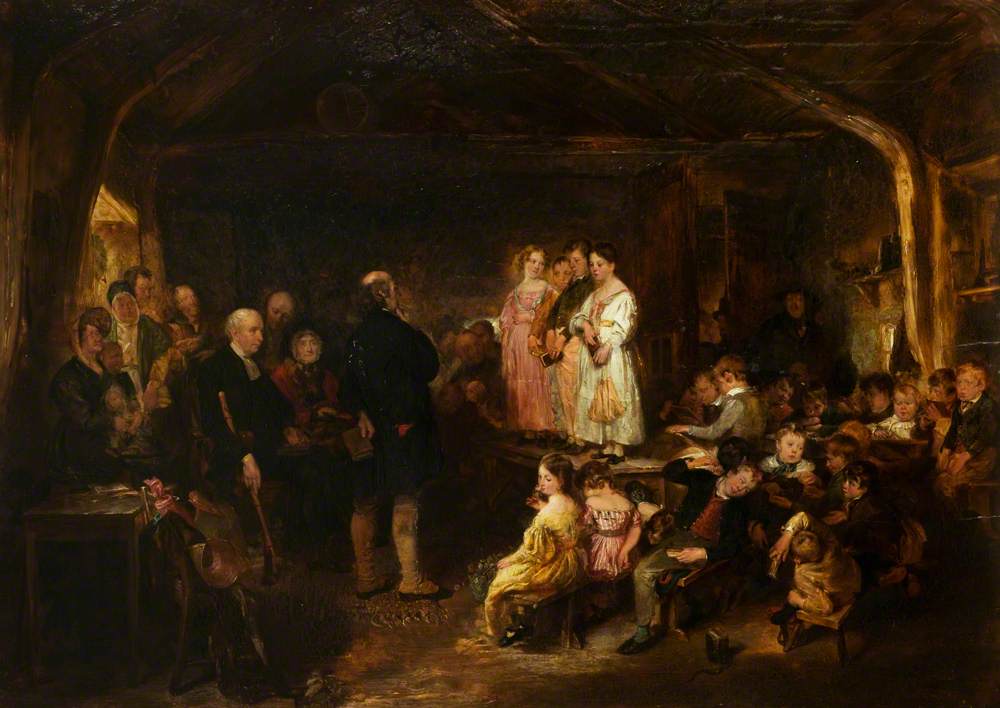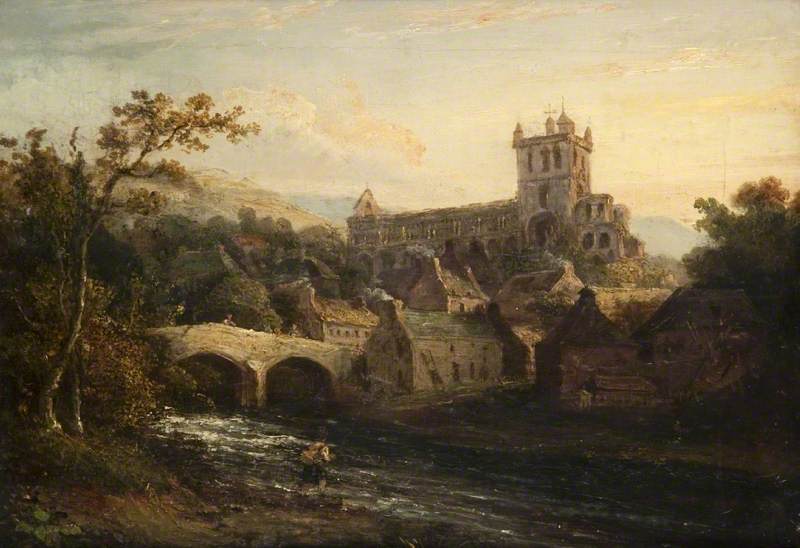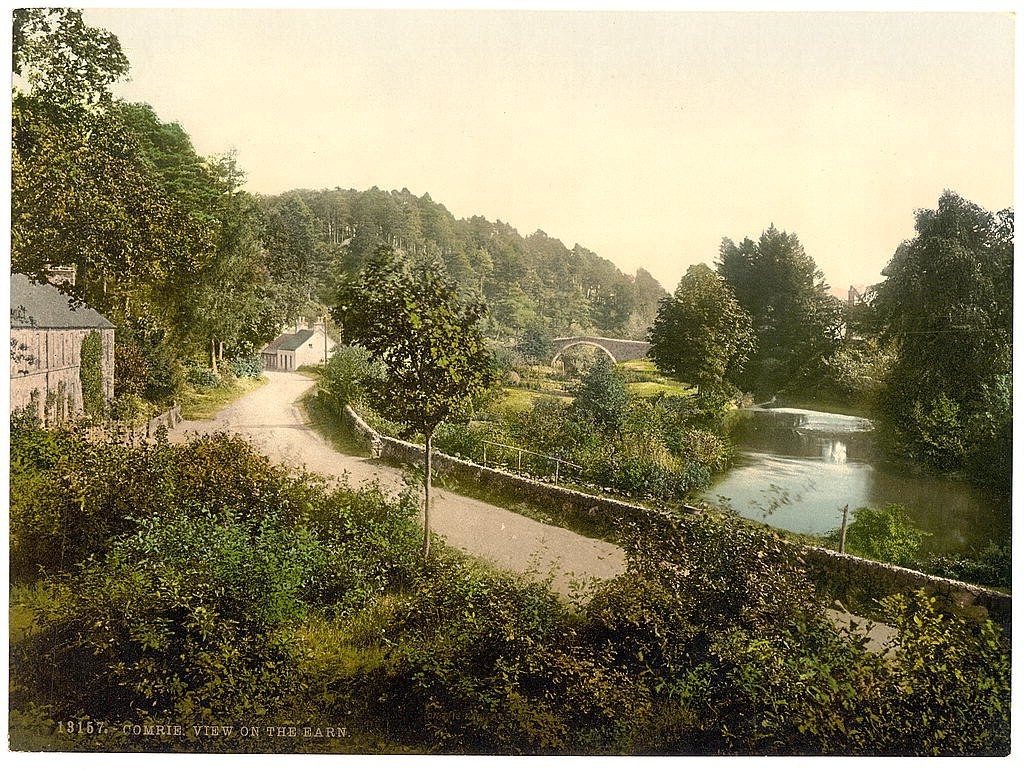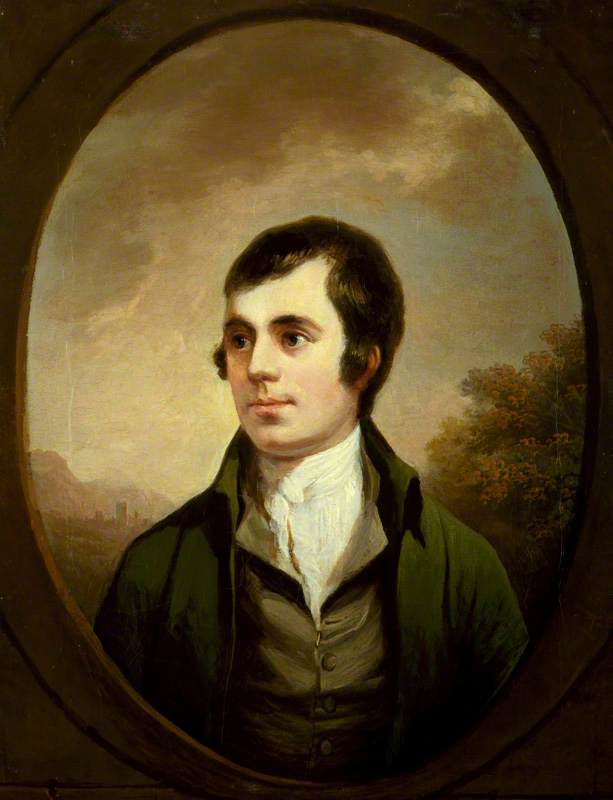Here is the last in our series of posts on Scotland’s languages. This time we look more closely at why there were changes in the languages spoken in Scotland. As illustrated in the last two posts, it is inevitable for there to be changes in languages (vocabulary, pronunciation and intonation) and their use. As people are influenced by others from different parishes and even further afield, so their language reflects this. The single most important change to affect Scotland was the rise in the usage of the English language.
The rise of the English language
The English language was gaining ground by the end of the 18th century for a number of reasons:
- Ability to converse with people from other countries
- English was the language of trade
- English was the language of the higher ranks and well-educated
- English was increasingly being taught in schools and used in religious instruction
Here are some examples of what was written in parish reports on the use of English:
Alness, County of Ross and Cromarty – “The English, however, has made very considerable progress in the parish for 20 years back, owing to the benefit received from the number of schools planted in it much about that time.” (OSA, Vol. XIX, 1797, p. 240)
Kirkhill, County of Inverness – “The language chiefly spoken by the common people is Gaelic; although a great many of them, from their being taught to read English at school, can transact ordinary business in that tongue.” (OSA, Vol. IV, 1792, p. 121)
Assynt, County of Sutherland – “The Gaelic language is still universal in Assynt, and the only medium of religious instruction. The English language, however, is making slow but sure progress. The youth of the parish are ambitious of acquiring it, being, sensible that the want of it proves a great bar to their advancement in life.” (NSA, Vol. XV, 1845, p. 112)
Aberdeen, County of Aberdeen – “The provincial dialect of the English, which is generally spoken here, is not commonly considered as being very pure. Owing, however, to a much greater intercourse with the English than formerly, a sensible change to the better has taken place in the idiom… The consideration also that this is a place of education; the seat of an university of considerable eminence; has proved an inducement to several, especially to those who have entertained thoughts of publishing in English, to make the proper idiom of the language more a matter of study than was ever done as any former period, a circumstance that has not failed to produce good effects.” (OSA, Vol. XIX, 1797, p. 182)
Kilmorie, County of Bute – “yet persons advanced in years understand the English language tolerably; they acquire it by intercourse with other countries, and are greatly assisted by having the organs of speech formed in their youth, it being the first language they are taught to read.” (OSA, Vol. IX, 1793, p. 170)
Calder Mid, County of Edinburgh – “Though the Scotch be the prevailing language of the country, yet, by the influence of those who have a more extended intercourse with the world, the people here are making evident approaches toward a more intimate acquaintance with the English tongue, which is the more desirable, as, since the union of England and Scotland, the language of the court of London has been received as the standard language of the united kingdoms.” (OSA, Vol. XIV, 1795, p. 365)
Dalmeny, County of Linlithgow – “The Dano-Saxon has continued to be spoken in the greater part of Scotland, and particularly what is called the Lowlands, with little deviation from the original, till near the present times, in which it has been giving place very rapidly to the modern English language. The cause of this, independent of the comparative merits or demerits of the two dialects, has been the union of the Scottish and English crowns; from which, as England is the larger and wealthier country, and is, besides, the court end of the Island, the English tongue has gained the ascendancy, and become the standard of fashion and of propriety.” (OSA, Vol. I, 1791, p. 228)
Inverchaolain, County of Argyle – “Gaelic is the language of the natives, both old and young, but all of them can read and speak English. English is gaining ground, and all are anxious to acquire it.” (NSA, Vol. VII, 1845, p. 112)
As mentioned in an earlier post (Scotland’s languages: Gaelic, Scots and English), those parishes where English was gaining ground were not necessarily anywhere near the English border. This shows that trade and travel impacted on the language spoken. As can be observed in the excerpts above, education also had a massive impact on language use.
Education
More and more schools were teaching the English language at the time of the Statistical Accounts. In Tain, County of Ross and Cromarty, “the inhabitants of the town speak the English, and also the Gaelic or Erse. Both languages are preached in the church. Few of the older people, in the country part of the parish, understand the English language; but the children are now generally sent to school, and taught to read English.” (OSA, Vol. III, 1792, p. 393)
It was felt that knowing how to read and speak English would improve people’s lives, such as those in Jura, County of Argyle. “The language universally spoken in the parish is Gaelic. Very few of the old people understand English. But from the laudable endeavours of the schoolmasters to teach their scholars the vocabulary, and use of that language, and from a general opinion gaining ground, that it will be of great service in life, it is hoped that the rising generation will make considerable progress in acquiring the English language. The inhabitants do not feel that strong desire of bettering their circumstances, that would stimulate them to exertion and enterprize. Instead of trying the effects of industry at home, they foster the notion of getting at once into a state of ease and opulence, with their relations beyond the Atlantic.” (OSA, Vol. XII, 1794, p 322) (This last sentence is a very revealing one! See our previous post on emigration.)
In Kilmuir, County of Inverness, some very interesting reasons were given why children were being taught the English language first. “1st, The imitative powers of children, with respect to sounds and articulation, are more acute in early life than in maturer years; and were the Gaelic taught first, it would be almost impossible to adapt the tone of the voice afterwards to English pronunciation; 2dly, Although the English may take a longer period than the Gaelic to acquire it properly, yet, when it is acquired, the pupils can master the Gaelic without any assistance; and 3dly, Such as cannot speak the English, naturally are more reluctant to leave the country in quest of that employment which they cannot procure at home.” (NSA, Vol. XIV, 1845, p. 281)
Some schools taught English as well as Gaelic, such as that of the parish of Gigha and Cara, County of Argyle (NSA, Vol. VII, 1845, p. 406). However, many parishes had more than one school, and it depended on which school you attended what language or languages you were taught. In Rogart, County of Sutherland, “there are three schools at present in operation in the parish,-the parochial school, a school supported by the General Assembly, and a Gaelic school, supported by the Gaelic School Society. In the parochial school, English reading, writing, arithmetic, book-keeping, mensuration, and land-surveying, are taught. In the General Assembly’s school, English reading, Gaelic reading, writing, arithmetic, and sometimes the rudiments of Latin, are taught. In the Gaelic school, the reading of the Gaelic only is taught.” (NSA, Vol. XV, 1845, p. 55)
There were five schools in the parish of Fodderty, County of Ross and Cromarty, each with a good number of attendees: “1. The parochial school, which has the maximum salary attached to it, exclusive of a dwelling-house,and L.2, 2s.in lieu of a garden. The branches taught are, English reading, grammar,writing, arithmetic, book-keeping, geography, Latin, and Greek. The average attendance is 63, and the annual amount of school fees paid may be about L. 16. 2. The school at Tollie, in the Brahan district, in connection with the Inverness Education Society. The attendance is 70. Both Gaelic and English are taught, together with writing and arithmetic. 3. The Gaelic school, supported by that excellent institution, the Gaelic School Society of Edinburgh, in which, old and young are taught to read the sacred Scriptures in their own language, and which is attended during winter by about 60. 4. The school at Maryburgh, on the scheme of the General Assembly’s Education Committee. The average attendance is 120. And, lastly, a school on the teacher’s own adventure, in the heights of Auchterneed ; at which the attendance is 84.” (NSA, Vol. XIV, 1845, p. 259)
It wasn’t always in school where children learnt languages! In Balquhidder, County of Perth, “towards the end of Spring, most of the boys go to the low country, where they are employed in herding till the ensuing winter; and, besides gaining a small fee, they have the advantage of acquiring the English language.” (OSA, Vol. VI, 1793, p. 95)
The Gaelic School Society
As can be gleaned from above, the Gaelic School Society established many schools teaching Gaelic throughout Scotland. The society was set up in Edinburgh to primarily teach people to read the Scriptures in Gaelic. It, therefore, played a very important role in encouraging the use of the Gaelic language. (For more information see the 19th century section in the Wikipedia entry for Gaelic medium education in Scotland.) In Assynt, County of Sutherland, “it is likely, nevertheless, that Assynt is one of the very last districts in which the Gaelic language shall cease to be the language of the people. It is remarkable that the Gaelic School Society will probably prove the means, at a remote period, of the expulsions of the Gaelic language from the Highlands. The teachers employed by that useful society, to whom we owe much, taught the young to read the Scriptures in their native tongue. This implanted a desire to acquire knowledge on other subjects, which induced them to have recourse to the English language as the medium of communication.” (NSA, Vol. XV, 1845, p. 112)
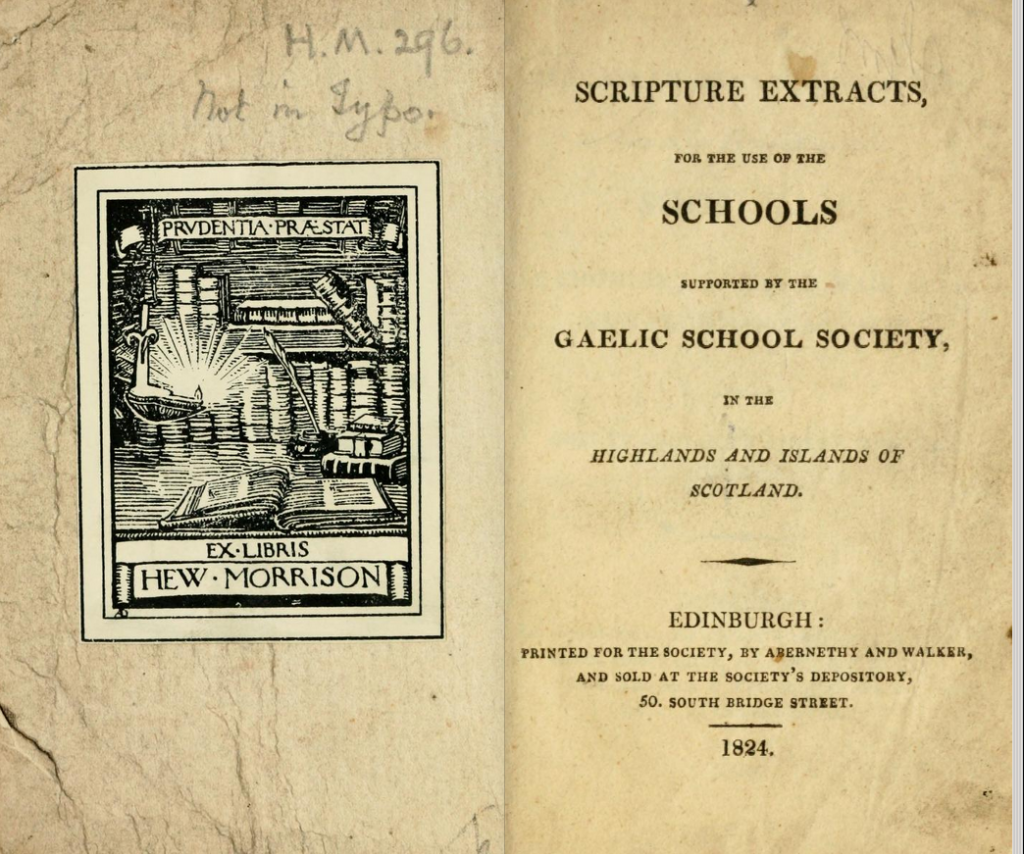
Scripture extracts : for the use of the schools supported by the Gaelic School Society in the Highlands and Islands in Scotland. Published in Edinburgh for the Society in 1824. Digitized by The National Library of Scotland and accessed via the Internet Archive.
In some parishes, it was thanks to this Society that people could read at all. In the parish of Lochs, Ross and Cromarty, “there are only 12 persons in all the parish who can write; but half the inhabitants from twelve to twenty-four years of age can read the Gaelic language, which is the only language spoken generally. A few of the males can speak broken English. It was by the instrumentality of the Gaelic School Society that so many of them were enabled to read Gaelic. The Gaelic School Society has four schools at present in the parish of Lochs, which are the only schools in it.” (NSA, Vol. XIV, 1845, p. 168)
Incidentally, it was claimed in the parish report of Killin, County of Perth, that “in the manse of Killin the present version of the Gaelic Scriptures was begun. The Gaelic Testament was executed by Mr James Stewart, from whom his son, the well-known Dr Stewart of Luss, obtained that knowledge of and taste for Gaelic literature which enabled him so faithfully to finish the Gaelic translation of the Bible. Killin may then fairly lay claim to the honour of this great work.” (NSA, Vol. X, 1845, p. 1087)
However, not everyone in the county of Ross and Cromarty thought the Society so praiseworthy! In the parish report for Kiltearn, the Reverend Thomas Munro wrote the following: “The Gaelic School Society, by establishing schools throughout the country, have done much to eradicate the language. This may appear paradoxical; but it is actually the case. Those children that had learned to read Gaelic found no difficulty in mastering the English; and they had a strong inducement to do so, because they found in that language more information suited to their capacity and taste, than could be found in their own. English being the language universally spoken by the higher classes, the mass of the people attach a notion of superior refinement to the possession of it, which makes them strain every nerve to acquire it; and it is no uncommon thing for those who have lived for a short time in the south, to affect on their return, a total forgetfulness of the language which they had so long been in the habit of using.” (NSA, Vol. XIV, 1845, p. 323)
You can read a fascinating article Gaelic School Society. Appeal to British Christians, Resident Abroad found in the Colonial Times, Tuesday, February 22, 1842, which is appealing to those living in Australia with Scottish connections to help the Society by giving donations or by subscribing to the Society.
The Society in Scotland for Propagating Christian Knowledge
At the time of the Statistical Accounts of Scotland, there was also in existence the Society in Scotland for Propagating Christian Knowledge. This society established schools teaching the reading and writing of English and/or Gaelic, along with other common branches of instruction, such as arithmetic and knowledge of the Scriptures, such as the school established by the Society at Aberfoyle, County of Perth. (NSA, Vol. X, 1845, p. 1158) In the Starthyre district of the parish of Balquhidder, County of Perth, “there is a school supported by the Society in Scotland for Propagating Christian Knowledge, in which are taught English, writing, arithmetic, and Gaelic.”(NSA, Vol. X, 1845, p. 348) In the parish of Urquhart and Glen, County of Inverness, “in the schools supported by the Society, great attention is paid to the teaching of the Gaelic language; and in the other schools, it is taught to those who wish to acquire it. (NSA, Vol. XIV, 1845, p. 50)
As reported in the Appendix for Edinburgh, County of Edinburgh, “an hundred and sixty thousand children have been educated by this society, and there are ten thousand in their schools this year 1792.” (OSA, Vol. VI, 1793, p. 590) The quality of their schools was very important to the society, and they were not afraid to close schools down. For some reason, “the ambulatory school, once established in this parish [Small Isles, County of Inverness], by the Society in Scotland for Propagating Christian Knowledge, was removed in Summer 1792.” (OSA, Vol. XVII, 1796, p. 290) Also, in the parish of Rathven, County of Banff, “the school in Buckie has been withdrawn by the Society, on the ground, that the school house has been allowed to fall into decay.” (NSA, Vol. XIII, 1845, p. 266)
In several parishes, such as that of Kincardine, County of Perth, applications were made to the society to establish much-needed schools. “Application having accordingly been made by the proprietor, the Society was pleased to enter very warmly into the situation of these poor people, and with the greatest alacrity agreed to the appointment of an experienced teacher, who was settled at Martinmas 1793. This teacher, who is well acquainted both with the Gaelic and the English languages, officiates through the week as schoolmaster, and on Sundays convenes the people in the schoolhouse, where be instructs them in the principles of religion, and says prayers to them in their native tongue.” (OSA, Vol. XXI, 1799, p. 181)
These applications show how important the society was to parishes throughout Scotland. Indeed, in Callander, County of Perth, you can find the following commendation: “Much praise is due to the excellent Society for Propagating Christian Knowledge; but for it, thousands in the Highland’s would have been deprived of the means of instructions. The people are alive to the benefit of education. All in this parish have the means of instruction, and all from six years and upwards can read. A very visible change in the conduct, morals, &c. of the people has taken place, since the facilities of education were increased.” (NSA, Vol. X, 1845, p. 358). The Society even paid to inoculate the poor in the parish! (OSA, Vol. XI, 1794, p. 625)
Religion
The establishment of schools by both the Gaelic School Society and the Society for Propagating Christian Knowledge illustrates the direct link which existed between education and religion at that time. Languages, whether the native-tongue or not, were being taught in order to enable people to read and learn from the Scriptures and the Shorter Catechism.
Of course, the most important consideration to parish ministers was what languages parishioners actually understood and used the most. Their needs and abilities had to be catered for. Here are some examples of having to find someone who could preach in Gaelic.
Cromarty, County of Ross and Cromarty – “There are two clergymen in the parish; the parish minister, and the minister of the Gaelic Chapel. There was no Gaelic preached in this place, until the erection of the chapel; and the principal reason of introducing it was, for the accommodation of Mr. Ross’s numerous labourers, and others who came from the neighbouring parishes to the manufacture of hemp.” (OSA, Vol. XII, 1794, p. 256)
Crathie, County of Aberdeen – “There is missionary minister, paid by the Royal Bounty, stationed in Braemar; but as he has not the Gaelic language, and as there are some persons who do not understand any English, the parish minister is obliged to exchange pulpits with him very frequently. The General Assembly of the church of Scotland have now pledged themselves, that how soon the present missionary is otherwise provided for, they shall appoint one for the future to that mission, but persons having the Gaelic language.” (OSA, Vol. XIV, 1795, p. 344)
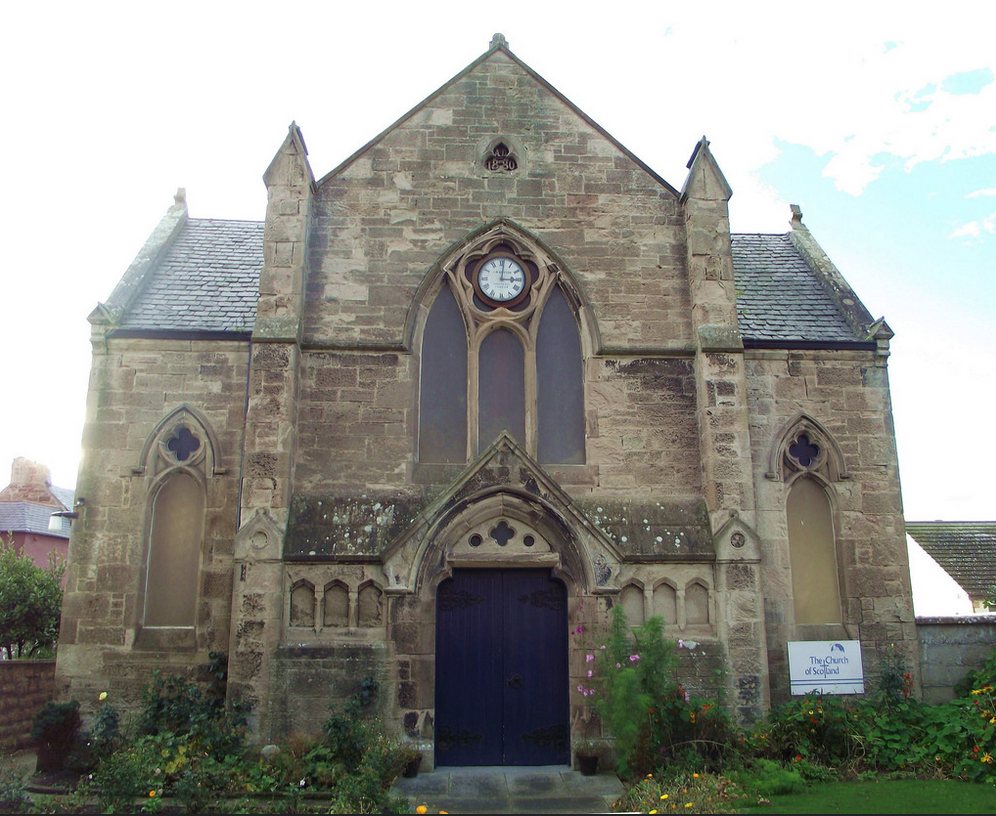
Ardersier Parish Church, near Inverness. Photograph taken by Dave Connor, 2015. Via Flickr under Creative Commons License 2.0. (https://creativecommons.org/licenses/by/2.0/)
Ardersier, County of Inverness – “It is a curious circumstance that, from the year 1757 to 1781, during the ministrations of two incumbents, no Gaelic was preached in the parish. On the ordination of the Rev. P. Campbell, in the latter year, it was requested by the peoples, and agreed to by him, that be should exhort them in the Gaelic language.” (NSA, Vol. XIV, 1845, p. 472)
However, as previously mentioned, English was becoming more widespread. Therefore, the availability of religious instruction in English was also increasing. In Dunoon and Kilmun, County of Argyle, “the language of the parish is changing much, from the coming in of low-country tenants, from the constant intercourse our people have with their neighbours, but above all, from our schools, particularly, those established by the Society for propagating Christian Knowledge. Hence the English or Scottish language is universally spoke by almost all ages, and sexes. But the Gaelic is still the natural tongue with them, their fireside language, and the language of their devotions. They now begin, however, to attend public worship in English as well as Erse, which 30 years ago they did not do.” (OSA, Vol. II, 1792, p. 389)
As reported in the parish of Aberfoyle, County of Perth, “in ancient times, the Gaelic language alone was spoken in this parish; and, even in the memory of man, it extended many miles farther down the country than it now does. The limits of this ancient tongue, however, are daily narrowed here as every where else, by the increasing intercourse with the low country. At present, every body understands English, though the Gaelic is chiefly in use. The service in church is performed in English in the forenoon, and in Gaelic in the afternoon.” (OSA, Vol. X, 1794, p. 129)
There are some very interesting observations made in the parish report for Torosay, County of Argyle, on languages, education and religious instruction. “So far, therefore, as they [the natives] are concerned, the language [Gaelic] has neither gained nor lost ground, for the last forty years. How long it may remain in this stationary condition is uncertain, especially as there are several families from the lowlands of late settled in the parish. These, having no inducement to study the Gaelic, as they find themselves generally understood in English, may, through time, habituate the natives to speak this language, even among themselves. At school, children are taught to read in both languages. Though the teaching of them thus to read Gaelic would seem to tend to its permanency, the contrary effect, in all probability, will ensue. By being able to compare both versions of the Scriptures, they daily add to their vocabulary of English words, so that the Gaelic in this manner forms to them a key for the acquisition of the English. So long as the native Highlanders understand Gaelic better than English, religious instruction must be communicated to them in that language, even if this circumstance should have the effect of postponing the day when English shall be the universal language of the empire. For, however desirable that event may be, it would be making too great a sacrifice to attempt to expedite it by suffering, in the meantime, even one soul to perish for lack of that knowledge which maketh wise unto salvation.” (NSA, Vol. VII, 1845, p. 289)
Resistance to change
Even though all these changes were taking place in schools and churches throughout Scotland, it must be noted that there was some resistance to the increasing use of English. Gaelic was still the preferred language in some quarters. In Urray, County of Ross and Cromarty,”Gaelic is the vernacular language of the whole parish, except in gentlemen’s families. Several of the inhabitants read the English Bible, and can transact business in that language; but they, as well as the bulk of the people, prefer religious instruction in Gaelic; and therefore are at pains to read the Gaelic New Testament, and Psalm Book, etc.” (OSA, Vol. VII, 1793, p. 259)
Both the Gaelic and Scotch languages were seen as noble and expressive languages. In Callander, County of Perth, “the language spoken by persons of rank and of liberal education, is English; but the language of the lower classes is Gaelic. It would be almost unnecessary to say anything of this language to those who understand it. They know its energy and power; the ease with which it is compounded; the boldness of its figures; its majesty, in addressing the Deity; and its tenderness in expressing the finest feelings of the human heart. But its genius and constitution, the structure of its nouns and verbs, and the affinity it has to some other languages, are not so much attended to. These point at a very remote area, and would seem to deduce the origin of this language from a very high antiquity.” (OSA, Vol. XI, 1794, p. 611) In Dalziel, County of Lanark, “the language generally spoken is a mixture of Scotch and English. The use of the Scotch has decreased within the last forty years, in consequence, I apprehend, of the improvement in teaching at the schools. But when persons are under excitement, the language used is Scotch. Then, the writer has observed, here and in other parts of Scotland, that the lower orders of society and many in the middling ranks, too, discover an acquaintance with that expressive dialect, which could not be inferred from their ordinary conversation.” (NSA, Vol. VI, 1845, p. 454) The native tongue is an integral part of the heritage and history of the people in the locality; its influence cannot be easily diminished, as the two examples above illustrate.
Conclusion
Looking at the Statistical Accounts of Scotland, one can identify several influences on the use of language, and English in particular, most notably travel, trade and education. What is really interesting is how these factors were interrelated. A knowledge of English allowed people to converse with people from the low countries and beyond. This then enabled greater trade, which allowed people to gain influence. The English language became the language of opportunities, so was increasingly being taught in schools. In turn, changes in education affected what was being used in everyday life and had a direct bearing on the language of people’s devotions, i.e. what was read and spoken in religious contexts.
______________________________________
It has been really fascinating to look at language use as a whole in the Statistical Accounts of Scotland, from place names through to the factors impacting on the languages spoken in Scotland. The country’s geography, history and culture have all played their part in shaping its linguistic landscape, making it what it is today. It is hoped that these series of posts will encourage you to further explore Scotland’s languages in the Statistical Accounts. If you find something particularly interesting let us know!

